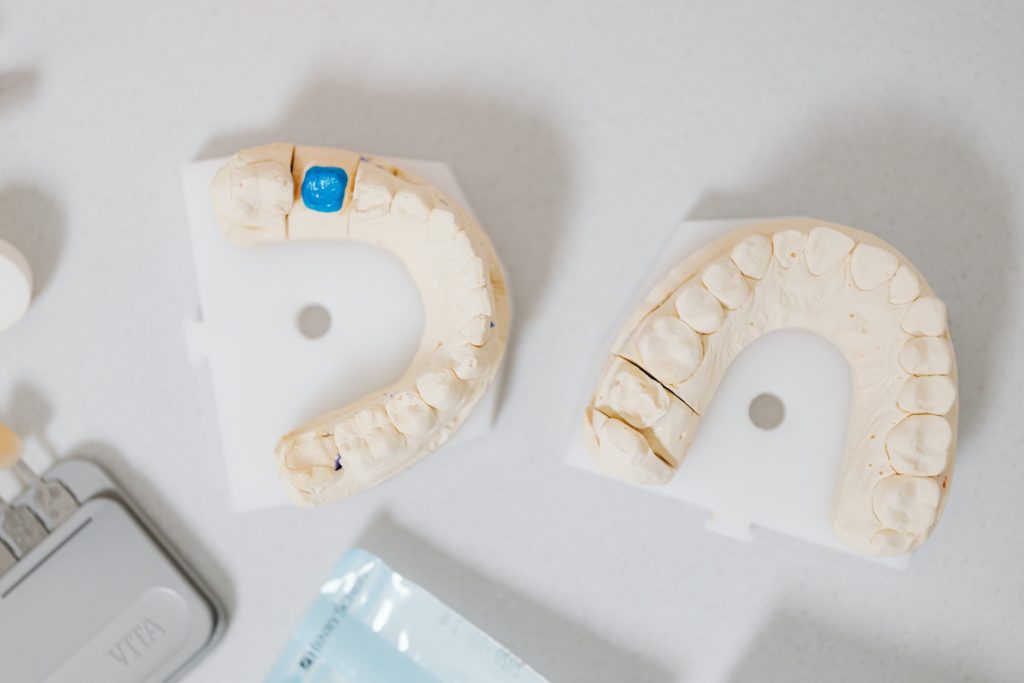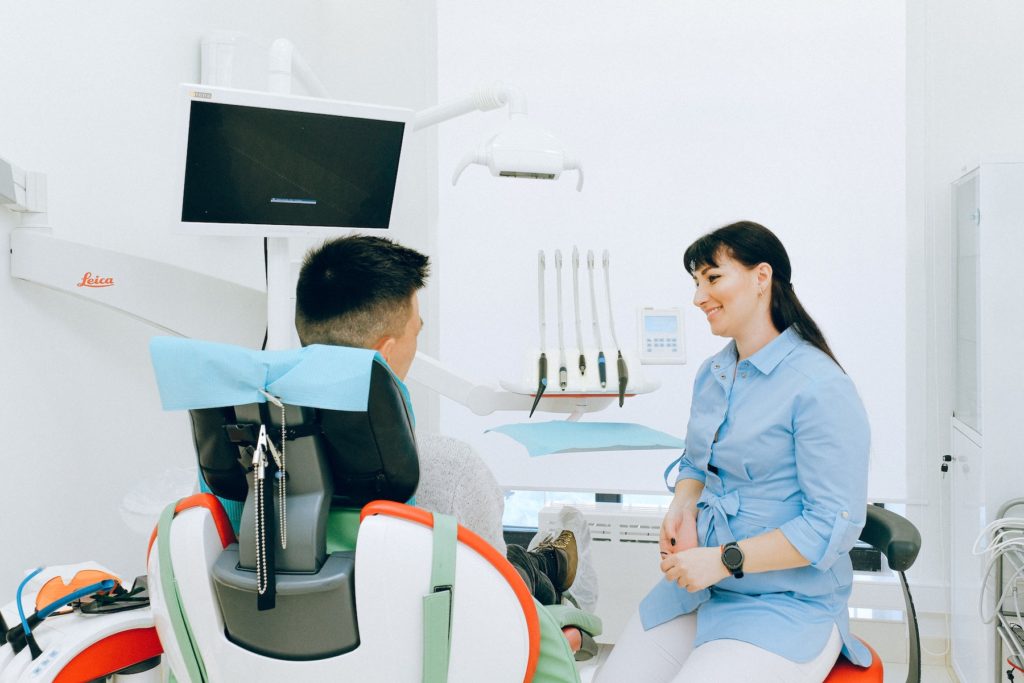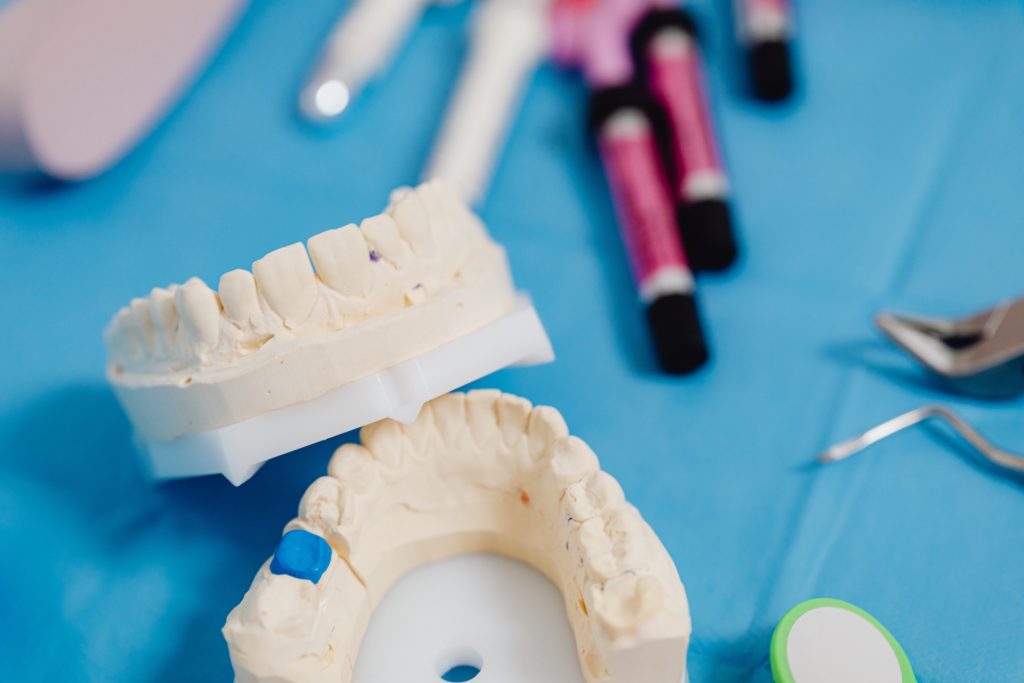There are several reasons why someone may be seeking alternatives to Invisalign. Some people may have certain dental conditions or alignment issues that make them ineligible for Invisalign treatment. Others may not want to commit to the time and effort required to wear Invisalign aligners for an extended period of time.
For those who are seeking alternatives to Invisalign, there are a number of options available. One alternative is traditional metal braces, which use brackets and wires to gradually shift teeth into the desired position. While metal braces are less discreet than Invisalign, they can be more effective in correcting more complex dental issues.
Another alternative is lingual braces, which are similar to traditional metal braces, but are attached to the back of the teeth instead of the front. This makes them virtually invisible, but they can be more difficult to clean and may cause more discomfort than traditional braces.
Clear aligners, such as ClearCorrect and Smile Direct Club, are also popular alternatives to Invisalign. These aligners work similarly to Invisalign by gradually shifting teeth into place using a series of custom-made aligners. However, they can be less expensive than Invisalign and may be more convenient for some people.
Other alternatives to Invisalign include dental bonding, veneers, and tooth contouring. These cosmetic dental procedures can be used to reshape and align teeth without the need for braces or aligners. However, they may not be appropriate for everyone and may not be as effective as orthodontic treatment for more severe dental issues.
Ultimately, the best alternative to Invisalign will depend on an individual’s specific dental needs and preferences. A consultation with a dental professional can help determine the best course of treatment for achieving a beautiful, healthy smile.

1. Traditional Braces
Traditional braces use metal brackets and wires to shift teeth into the desired position. The brackets are bonded to the teeth, and the wires are threaded through the brackets and adjusted periodically by the orthodontist to gradually move the teeth.
Pros of traditional braces include their effectiveness in treating more complex dental issues such as severe crowding or bite problems. They also tend to be less expensive than Invisalign, and treatment time can sometimes be shorter.
However, there are also cons to traditional braces. They are more visible and can impact one’s appearance, which can be a concern for some people. They can also be more uncomfortable and may require more frequent visits to the orthodontist for adjustments.
Different Types of Traditional Braces
- Metal Braces: These are the most common type of braces and are made of metal brackets and wires. They are very durable and can be used to treat a wide range of dental issues.
- Ceramic Braces: These braces are made of clear or tooth-colored materials, making them less noticeable than metal braces. However, they are more fragile and require more maintenance than metal braces.
- Lingual Braces: These braces are attached to the back of the teeth instead of the front, making them less visible. However, they can be more difficult to clean and can be uncomfortable on the tongue.
Compared to Invisalign, traditional braces may be a better option for those with more complex dental issues or for those who are looking for a more affordable option. However, Invisalign may be a better choice for those who are concerned about the appearance of braces or who are looking for a more comfortable treatment option.
1) Metal Braces
Metal braces are the most common type of braces used by orthodontists. They are made of high-grade stainless steel and consist of brackets, archwires, and elastic bands. The brackets are attached to the teeth using a special adhesive and the archwires are threaded through them. The elastic bands are used to hold the archwires in place.
Pros: Metal braces are the most effective and affordable option for correcting a wide range of orthodontic issues. They are also very durable and can withstand the normal wear and tear of daily use. Additionally, metal braces are often preferred by younger patients as they can choose from a variety of fun colors for their elastic bands.
Cons: Metal braces are highly visible, which can be a concern for some people. They can also cause discomfort and irritation to the mouth, especially during the first few weeks of treatment. Additionally, metal braces require regular adjustments and maintenance, which can be inconvenient for some patients.
2) Ceramic Braces
Ceramic braces are similar in design to metal braces, but instead of metal brackets, they use clear or tooth-colored brackets made of ceramic or composite materials. The archwires and elastic bands used with ceramic braces can also be tooth-colored, making them less noticeable than traditional metal braces.
Pros: Ceramic braces are less visible than metal braces, which can make them a more appealing option for patients who are concerned about their appearance. They are also very effective at correcting orthodontic issues and can be used to treat a wide range of cases.
Cons: Ceramic braces are more fragile than metal braces and require extra care and maintenance to prevent damage or breakage. They are also more expensive than metal braces and may require longer treatment times.
3) Lingual Braces
Lingual braces are similar in design to traditional metal braces, but instead of being placed on the front of the teeth, they are attached to the back or lingual side of the teeth. Lingual braces are custom-made to fit the individual patient’s teeth and are typically made of metal or clear materials.
Pros: Lingual braces are the most discreet type of braces as they are completely hidden from view. They can be used to correct a wide range of orthodontic issues and are suitable for patients of all ages.
Cons: Lingual braces are more difficult to clean and maintain than other types of braces, which can lead to oral hygiene issues. They can also cause discomfort and irritation to the tongue and may require a longer adjustment period than other types of braces. Additionally, lingual braces are more expensive than traditional metal braces.

2. Clear Aligners (Non-Invisalign Brands)
Clear aligners, also known as clear aligner therapy, are orthodontic devices that straighten teeth without the use of traditional metal or ceramic braces. These aligners are custom-made for each patient using computer-aided design (CAD) and 3D printing technology.
Clear aligners work by applying constant and gentle pressure to teeth in specific locations, gradually moving them into the desired position. The aligners are worn for 20-22 hours a day and are changed every 1-2 weeks, depending on the treatment plan.
Some Popular Non-Invisalign Brands of Clear Aligners
- ClearCorrect: A popular alternative to Invisalign, ClearCorrect uses clear, removable aligners to straighten teeth. The treatment process involves taking impressions of your teeth and creating a custom treatment plan using 3D imaging technology.
- SmileDirectClub: SmileDirectClub offers clear aligners that are designed to be worn for 22 hours a day to gradually shift teeth into place. Treatment plans are created remotely using a combination of 3D imaging and impressions of your teeth.
- Byte: Byte offers at-home clear aligner treatment plans that are designed to be faster and more affordable than traditional orthodontic treatments. Treatment plans are created using impressions of your teeth and 3D imaging technology, and aligners are worn for 22 hours a day to gradually shift teeth into place.
- Candid: Candid offers clear aligners that are designed to be worn for 22 hours a day to straighten teeth. The treatment process involves taking impressions of your teeth and creating a custom treatment plan using 3D imaging technology.
- SmileLove: SmileLove offers clear aligners that are designed to be worn for 22 hours a day to gradually shift teeth into place. Treatment plans are created remotely using impressions of your teeth and 3D imaging technology.
1) Pros of Clear Aligners Compared to Invisalign and Other Alternatives
- Clear aligners are nearly invisible, making them a discreet option for adults and teens.
- They are removable, making it easier to eat, brush, and floss.
- Clear aligners are comfortable and do not cause irritation or discomfort.
2) Cons of Clear Aligners Compared to Invisalign and Other Alternatives
- Clear aligners may not be as effective as traditional braces for complex orthodontic issues.
- They require a high level of compliance from the patient, as they must be worn for 20-22 hours a day.
- They can be more expensive than traditional braces.
3. Retainers
Retainers are orthodontic appliances that are typically used after braces or clear aligners to maintain the position of teeth and prevent them from shifting back to their original position. Retainers are custom-made to fit a patient’s mouth and can be made from various materials, such as plastic or wire.
Retainers work by applying slight pressure to the teeth, which helps keep them in their new position. There are two main types of retainers: removable and fixed. Removable retainers are typically made of clear plastic and are worn over the teeth like a mouthguard. Fixed retainers are cemented to the back of the teeth and cannot be removed by the patient.
One of the main benefits of retainers as an alternative to Invisalign and other braces is their convenience. Retainers are easy to wear and do not require any adjustments, making them a low-maintenance option for maintaining the position of teeth. They also tend to be less expensive than other orthodontic treatments.
However, there are also some downsides to using retainers as an alternative to Invisalign or braces. Retainers are not designed to correct significant alignment or bite issues and may not be as effective as other treatments in these cases. Additionally, removable retainers can be lost or broken, requiring replacement, and fixed retainers can be difficult to clean and maintain.
Popular brands of retainers that can be alternatives to Invisalign include Essix, Vivera, and Hawley retainers. Essix retainers are clear, removable retainers that are made from thin plastic material. Vivera retainers are also clear, removable retainers made by Invisalign. Hawley retainers are removable retainers that consist of a metal wire and plastic covering for the roof of the mouth. Each of these retainers has its own benefits and drawbacks, and patients should work with their orthodontist to determine which option is best for their individual needs.
While retainers are not necessarily an alternative to Invisalign, they are often used as a follow-up treatment to maintain the results achieved with Invisalign or other orthodontic treatments.
1) Some Popular Retainer Brands
- Essix: Essix retainers are clear, removable retainers made from a thin plastic material that conforms to the shape of your teeth. They are often used to maintain the results achieved with Invisalign or other clear aligner treatments.
- Vivera: Vivera retainers are made by Invisalign and are similar to Essix retainers in that they are clear, removable, and made from a thin plastic material. They are designed to maintain the results achieved with Invisalign treatment.
- Hawley: Hawley retainers are a type of removable retainer made from a combination of acrylic and metal wires. They are designed to maintain the position of your teeth and are often used as a follow-up treatment to traditional metal braces.
- ClearBow: ClearBow retainers are similar to Hawley retainers, but they use a clear plastic bow instead of metal wires. This makes them less visible and more discreet.
- Zendura: Zendura retainers are made from a flexible thermoplastic material that is both strong and durable. They are designed to maintain the results achieved with clear aligner treatments like Invisalign.

4. Veneers
Veneers are thin, custom-made shells of tooth-colored materials that are used to cover the front surface of teeth to improve their appearance. They are typically made of porcelain or composite resin, and can be used to address a variety of cosmetic concerns, such as stained or discolored teeth, chipped or broken teeth, or teeth that are misshapen or unevenly spaced.
1) Some Popular Options for Veneers
- Porcelain veneers: These are thin, custom-made shells of porcelain that are bonded to the front of teeth. They are strong, durable, and can last for many years with proper care.
- Composite veneers: These are made of a tooth-colored composite resin material that is applied directly to the tooth and sculpted to achieve the desired shape and color. They are less expensive than porcelain veneers but may not be as long-lasting.
- Lumineers: These are a type of ultra-thin porcelain veneer that requires minimal or no tooth preparation. They are often used for patients who have minor cosmetic imperfections and prefer a minimally invasive option.
2) Pros of Veneers Compared to Invisalign
- Veneers can provide immediate results, while Invisalign treatment can take several months to a year or more.
- Veneers are often less invasive than orthodontic treatments, making them a good option for patients who want to avoid braces or aligners.
- Veneers can address a wider range of cosmetic issues than Invisalign, including severely stained or misshapen teeth.
3) Cons of Veneers Compared to Invisalign
- Veneers are a more expensive option than Invisalign treatment.
- Veneers are a permanent solution and require the removal of a small amount of tooth enamel, which can cause sensitivity or discomfort.
- Veneers do not correct functional issues such as bite problems or jaw misalignment, which can be addressed with orthodontic treatment.
Read More About Veneers: Invisalign vs Veneers: Which is Best for You?
5. Comparison of Invisalign Alternatives
1) Invisalign vs Traditional Braces
| Orthodontic Treatment | Pros | Cons |
|---|---|---|
| Invisalign | Almost invisible, removable, comfortable, suitable for mild to moderate cases | More expensive than traditional braces, may require attachments, not suitable for severe cases |
| Traditional Braces | Effective for all types of cases, lower cost than Invisalign, no risk of losing or misplacing them | Less discreet, may cause discomfort or irritation, require frequent adjustments |
| Ceramic Braces | Less noticeable than metal braces, effective for all types of cases | More expensive than metal braces, may discolor or stain |
| Lingual Braces | Invisible, effective for all types of cases | More expensive than other types of braces, may cause speech difficulties, difficult to clean |
| Clear Aligners (ClearCorrect, SmileDirectClub, Byte, etc.) | Almost invisible, removable, comfortable, suitable for mild to moderate cases | More expensive than traditional braces, may require attachments, less effective for severe cases, less supervision from orthodontist |
| Retainers | Inexpensive, effective for minor adjustments or maintaining teeth alignment | Not effective for correcting major alignment issues, may require constant wear |
2) Invisalign vs Other Clear Aligner Brands
| Criteria | Invisalign | ClearCorrect | SmileDirectClub | Byte |
|---|---|---|---|---|
| Treatment time | Average of 12-18 months | Similar to Invisalign | 4-6 months per set | 3-6 months per set |
| Appearance | Virtually invisible | Virtually invisible | Clear plastic | Clear plastic |
| Treatment process | Customized treatment plan | Customized treatment plan | Remote monitoring | Customized treatment plan |
| Maintenance and care | Requires daily cleaning and upkeep | Same as Invisalign | Requires daily cleaning and upkeep | Same as Invisalign |
| Comfort | Comfortable to wear | Comfortable to wear | Some discomfort at first | Comfortable to wear |
| Effectiveness | Effective for most cases | Effective for most cases | Effective for mild to moderate cases | Effective for most cases |
| Cost | Typically more expensive | Similar to Invisalign | More affordable than Invisalign | Similar to Invisalign |
| Accessibility | Available through orthodontists and dentists | Available through dentists | Direct-to-consumer | Direct-to-consumer |
3) Invisalign vs Veneers
| Treatment | Pros | Cons |
|---|---|---|
| Invisalign | Clear and virtually invisible, removable for easy cleaning, comfortable to wear, can treat a variety of orthodontic issues | Requires good compliance, may not be suitable for severe orthodontic issues, can be more expensive than other options |
| Porcelain veneers | Can improve appearance of teeth quickly, can fix a variety of dental issues, durable and long-lasting | Requires removal of some natural tooth enamel, can be expensive, not suitable for all dental issues |
| Lumineers | Less invasive than traditional veneers, no removal of natural tooth enamel required, can improve appearance of teeth quickly | Limited applications, may not last as long as porcelain veneers, can be expensive |
| Snap-On Smile | Non-invasive and reversible, can improve appearance of teeth quickly, affordable | Limited lifespan, may not be suitable for severe dental issues, not as durable as other options |
6. Best Type of Orthodontic Treatment for a Particular Situation
The best type of orthodontic treatment for a particular situation may depend on various factors such as the severity of misalignment, the age of the patient, their personal preferences, and budget.
- Severe misalignment: Traditional braces or lingual braces may be the best option for severe misalignment since they provide stronger and more precise force to move teeth. Invisalign or clear aligners may not be effective in severe cases.
- Mild to moderate misalignment: Clear aligners like Invisalign or alternative brands, ceramic braces or lingual braces can be a good option since they are less noticeable and still provide enough force to correct the misalignment.
- Crowded teeth: Clear aligners or ceramic braces can be a great option for minor crowding since they can move teeth in small increments. Traditional metal braces can also be used but may require more frequent adjustments.
- Gaps between teeth: Clear aligners, ceramic braces, or traditional braces can be used to close gaps between teeth. In some cases, veneers or bonding may also be an option.
- Bite problems: Severe bite problems like overbite, underbite or crossbite may require traditional braces or lingual braces to correct. Invisalign or clear aligners may not be as effective in correcting these types of issues.
It is always best to consult with an orthodontist to determine the best treatment option for your individual situation.

Which Invisalign Alternative Will Work For You?
In this post, we discussed several alternatives to Invisalign for those seeking orthodontic treatment. We covered traditional braces (metal, ceramic, and lingual), clear aligners (ClearCorrect, SmileDirectClub, Byte), and retainers as well as veneers as a cosmetic alternative. Each option has its own set of pros and cons, and the best choice for each individual depends on their specific needs and circumstances. It is highly recommended to consult with an orthodontist to determine the best treatment plan for a particular case.
Consult with an Orthodontist and Make a Decision
In conclusion, there are a variety of orthodontic treatments available that can be used as alternatives to Invisalign. Each of these options has its own unique set of advantages and disadvantages that make them better suited for certain situations. It’s essential to consult with an experienced orthodontist who can evaluate your individual needs and recommend the best treatment option for you.
For those who value discretion, clear aligners like ClearCorrect, SmileDirectClub, and Byte can be a great option. For individuals who require more severe correction or have complex cases, traditional metal or ceramic braces may be the best choice. Lingual braces may also be an option for those who prefer the look of traditional braces but don’t want them to be visible from the front.
It’s important to keep in mind that veneers can be a suitable alternative for those looking to correct cosmetic issues rather than orthodontic ones. Veneers can be a great option for people who want to improve the appearance of their teeth but don’t have significant misalignment or other orthodontic problems.
The best orthodontic treatment for you will depend on your unique situation, goals, and preferences. Consulting with an orthodontist is the best way to determine which treatment option will provide you with the best results.



